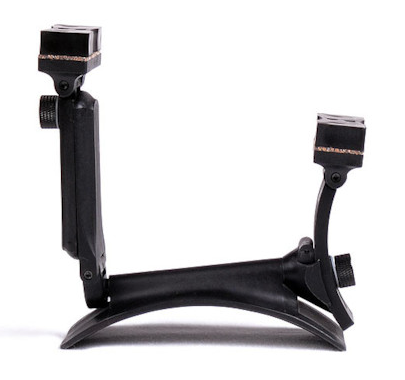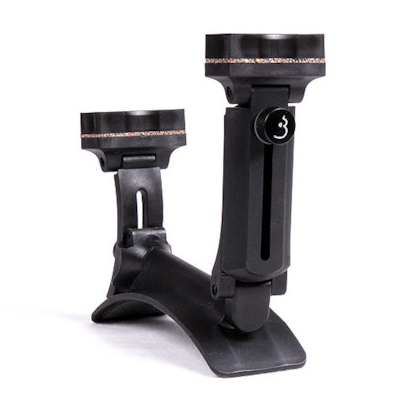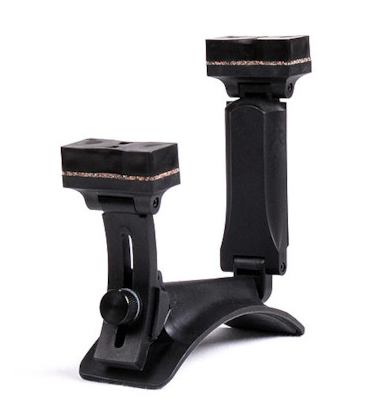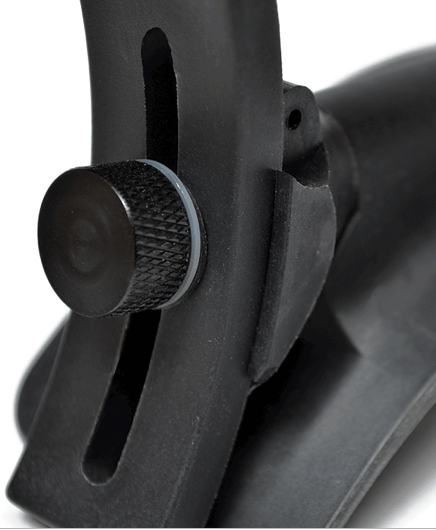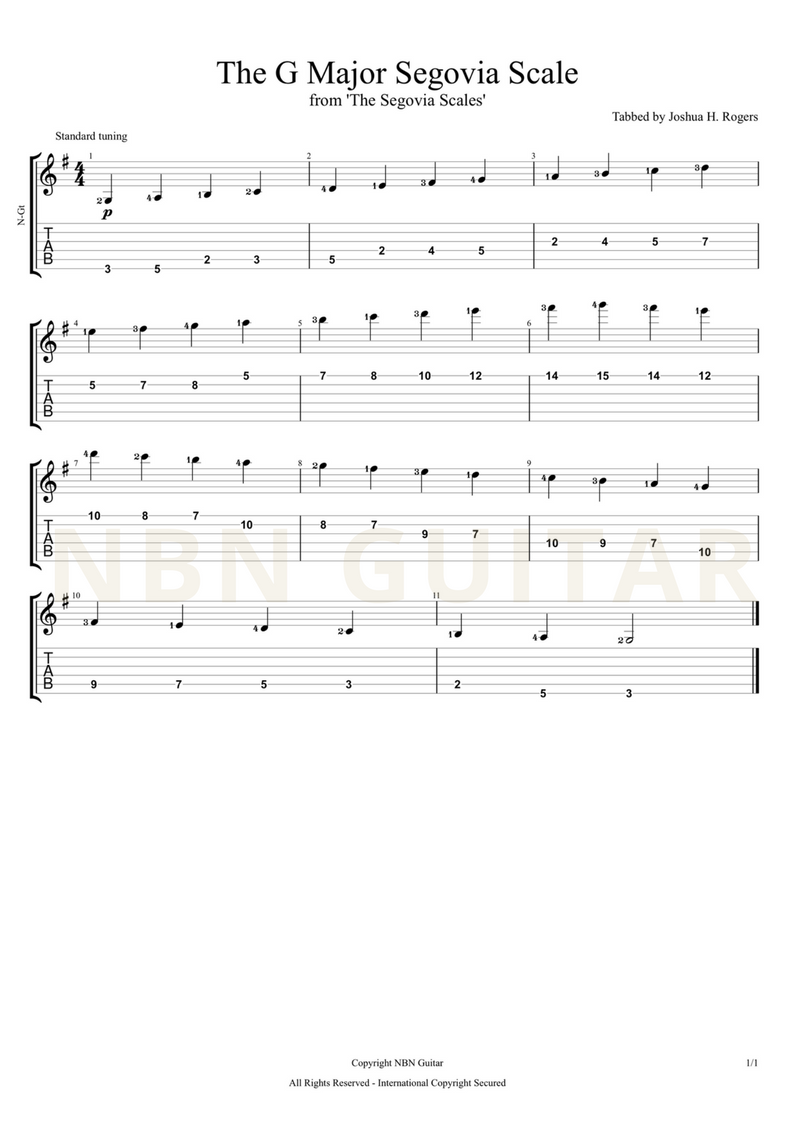Sagework Umbra Guitar Support Review
The Atlas & Umbra guitar supports from Sagework are gaining critical acclaim from guitarists worldwide. Read my article and watch my video to find out why many players consider this to be the Rolls Royce of guitar supports.
Umbra guitar support from Sagework
In this review I'll be explaining why I think this guitar support is so good for guitarists and why you should probably throw your footstool away in favour of this attractive, practical, but kind of expensive modern product. Don't forget to check out my other review on the Atlas guitar support also from Sagework and my installation video guide on YouTube (links are at the end of this article).
Features:
- 100% Reinforced Nylon material
- Sleek modern appearance
- Highly adjustable
- Ergonomic design
Pros:
- Super easy setup
- Pickup & play
- Comfortable
- Safe & secure
- Light & easy to stow
- Cheaper than the Atlas model
Cons:
- Installation is more complicated than other guitar supports
- Adjustable points can be a tad overwhelming
- More expensive than other supports
My conclusions:
I have to say that after having installed this I will never go back to using a foot stool. I look at this as the nemesis to the foot stool. Here are my reasons:
- Practical. Just leave it attached to your guitar!
- Comfortable. The curved thigh mount feels great
- Adjustable. So many options allow you to seat the guitar in the perfect position
- Compact. This support packs up into a tiny space allowing you to stow it conveniently in your guitar case
- Posture. I love having both of my feet flat on the ground. This feels far more natural and stable.
Here's my video review of the Sagework 'Umbra' guitar support:
Watch my installation video for the Atlas/Umbra guitar supports below.
For performers I feel this is the way to go. When you walk out on stage with your foot stool or even if you've set up your foot stool in advance it just looks clumsy. Very rarely will it ever be set in the right place and bending over to place it in front of your chair is never flattering. With this support you can just attach it before you walk out on stage! As soon as you sit down you're ready to go and that for me is a beautiful thing.
The Umbra comes in at around 20% cheaper than the Atlas making it a great deal! This support is built to last and although it may be the second most expensive option out there it will give you many years of comfortable, easy, and satisfying use.
If you want a support like this head to the Sagework website and buy one!
Let your fingers fly!
Farewell Malcolm Young - AC/DC
A brief eulogy to one of the greatest rhythm guitarists of all time - Malcolm Young of AC/DC.
Malcolm Young - The Riff King
Malcolm Young was the driving force behind one of the most recognisable and iconic rock bands ever - AC/DC. I remember going to boarding school when I was 13 and making friends with a fellow boarder named James. He was an absolute fan of AC/DC and his dorm room had pictures of the band and Angus Young adorning every available inch of wall space. Up until that point I didn't know who Angus Young, Bon Scott, Malcolm Young, & Phil Rudd were. Needless to say after I started learning guitar a couple of months later I would commit to learning many AC/DC songs and subsequently played Back in Black at my first ever battle of the bands in Napier, New Zealand in 1990.
As the years passed I learned more and more AC/DC songs and as I write this I could probably play about 7 or 8 songs without needing to rehearse at all. I know smatterings of probably at least another 15 and can sing along with many more. But I digress, let's get back to Malcolm Young. As a riffologist there probably are few if any that come up to Young's level. His unerring, driving, faultless rhythm combined with his uncanny ability to write extremely memorable, catchy yet not overly difficult riffs enabled AC/DC to rise above the masses of hard rock/blues-based bands from the 1970s right up until today.
Facts about Malcom Young
- Born in Glasgow, Scotland in 1953
- Immigrated to Australia in 1963
- Formed AC/DC in 1973
- Wrote albums & toured for 41 years
- Played Gretsch guitars through Marshall amps
- Favoured low volume + no gain
- Has 2 children - Cara & Ross
Thanks for the music Malcom.
For those about to rock...we salute you!
Josh Rogers
The G Major Segovia Scale For Guitar
The Segovia Scales
Hi there fellow guitarists! In this lesson I'll be sharing with you what I believe to be the best all-around scale for you to learn in your early days on guitar. The complete set of Segovia scales are quite exhaustive and are actually an enormous and intimidating challenge for any guitarist to master and memorise. These scale patterns came into vogue after the legendary guitarist Andres Segovia claimed that he incorporated these scale ideas into his daily practice. In many respects it was like being given the keys to the Ferrari. Many guitarists of the time immediately set about copying the great maestro and going to great lengths to explain these scales with suggestions on how to practice them and why they were of such significant didactic and technical importance to aspiring students of classical guitar.
One Scale To Rule Them...
This is probably going to be quite controversial but here's why I think it's the only guitar scale you need to learn:
It covers 3 octaves
In the lower position it stretches out your fingers
There are 5 position shifts
It moves through the most common, useful areas on the guitar
It uses all 6 strings
It travels all the way from the 3rd fret to the 15th
Suggested Right-Hand Fingering Combinations:
i, m & m, i
i, a & a, i
m, a & a, m
i, m, a & a, m, i
i, m, i, a
p, i & i, p
p, m & m, p
p, a & a, p
Have fun and let your fingers fly!
Josh



